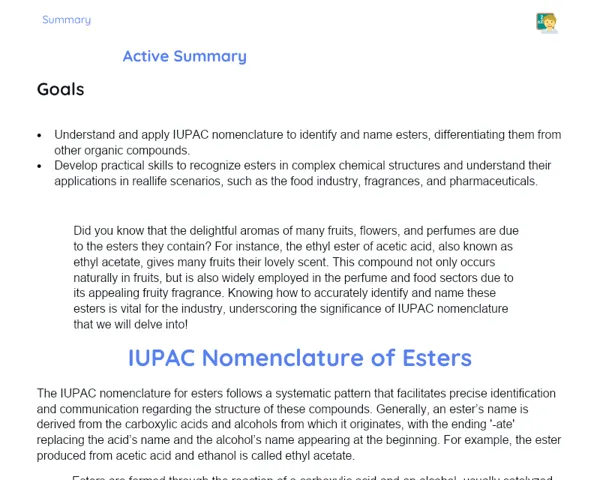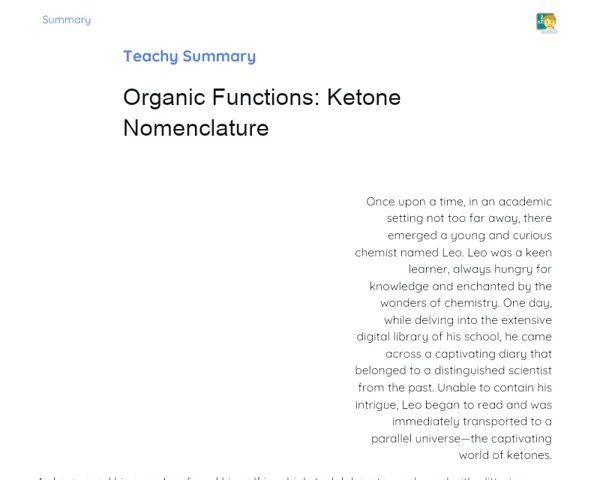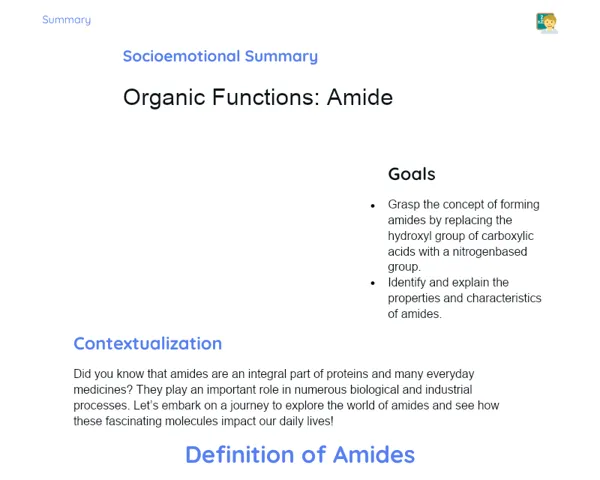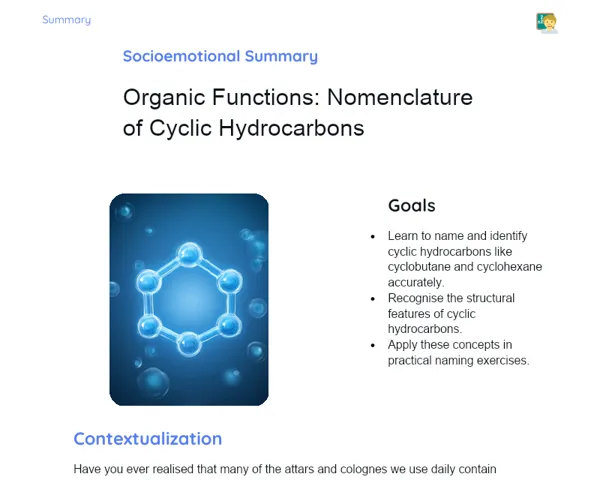Objectives
1. Identify and understand the key factors that influence the melting and boiling points of organic compounds.
2. Analyze the polarity of compounds and how it affects their physical properties, such as melting and boiling points.
3. Apply theoretical knowledge in practical settings, like cooking and the pharmaceutical industry, to grasp the significance of the properties of organic compounds.
Contextualization
Did you know that choosing oils for cooking goes beyond just enhancing flavor? 🍳 It's rooted in science! For instance, oils with higher melting points, like ghee, are perfect for making curries and sautéing, as they maintain their structure at higher temperatures. Understanding properties like melting and boiling points is essential for chefs and scientists alike, whether they're innovating new dishes or formulating medications.
Important Topics
Polarity and Molecular Structure
The polarity and molecular structure of organic compounds are crucial in determining their melting and boiling points. Compounds with polar covalent bonds or strong dipole-dipole interactions usually have higher melting and boiling points due to the additional energy required to separate their molecules. Conversely, nonpolar compounds or those that are predominantly hydrophobic tend to have lower points as their molecules are less attracted to one another.
-
Polar compounds, such as ethanol and acetic acid, show higher melting and boiling points due to strong intermolecular attraction.
-
The presence of functional groups in organic compounds can significantly change their properties, including melting and boiling points.
-
Understanding polarity and molecular structure is crucial for practical applications, like selecting solvents in chemical processes and synthesizing new compounds.
Melting Point
The melting point refers to the temperature at which a compound transitions from solid to liquid. For organic compounds, the melting point is a key characteristic useful for their identification and purification. Pure compounds typically have well-defined and consistent melting points, while those with impurities or mixtures result in lower and less distinct melting points.
-
Determining the melting point is a standard technique in laboratories to confirm the purity of compounds.
-
Mixtures and impurities in organic compounds can lead to lower and broader melting and boiling points.
-
The melting point can be influenced by atmospheric pressure and compound purity, making it vital in synthesis and chemical analysis.
Boiling Point
The boiling point is the temperature at which the vapor pressure of a liquid matches the external pressure. For organic compounds, this point is affected by factors like polarity, molecular size, and intermolecular forces. Compounds with strong intermolecular interactions, such as hydrogen bonds, tend to exhibit higher boiling points.
-
The boiling point is an important property for identifying compounds and assessing their purity.
-
The presence of hydrogen bonds between molecules significantly increases the boiling point of organic compounds.
-
Understanding boiling points is fundamental for designing industrial processes, like distillation, which depend on the vaporization and condensation of compounds.
Key Terms
-
Polarity: Property of a molecule with an uneven distribution of electrons, resulting in a dipole.
-
Melting Point: Temperature at which a solid changes to liquid.
-
Boiling Point: Temperature at which a liquid's vapor pressure equals the external pressure, causing it to boil.
For Reflection
-
How does polarity influence the physical properties of an organic compound, such as its melting and boiling points?
-
Why is it essential for a scientist to be aware of the melting and boiling points of organic compounds in labs or industry?
-
In what ways can understanding the melting and boiling properties of organic compounds aid in the development of new materials or medicines?
Important Conclusions
-
We explored how the molecular structure and polarity of organic compounds greatly affect their melting and boiling points, stressing the importance of these properties in cooking, pharmaceuticals, and various applications.
-
We learned that polar compounds or those with stronger intermolecular interactions often have higher melting and boiling points, and how this understanding is critical for designing processes and products.
-
We discussed the significance of purifying organic compounds through melting point determination, a key technique in chemistry labs to ensure accurate and pure results.
To Exercise Knowledge
- Create a mini-lab at home: Experiment with different oils (like mustard oil, groundnut oil, and coconut oil) and predict how they behave under varying temperatures. 2. Chemist Chef Challenge: Pick a recipe that involves melting or solidifying fats and oils, explaining your choices based on the melting and boiling properties of the ingredients used. 3. Lab Simulation: Use an online melting point simulator to practice interpreting data and determining the purity of compounds.
Challenge
🌟 'Purity Master' Challenge: Use common kitchen materials (like sugar, salt, and baking soda) to create mixtures, then purify them using the melting point method. Document your process and results, discussing how applying this method can be vital in real-life scenarios like drug production or forensic science.
Study Tips
-
Use mind maps to link the properties of organic compounds to their real-world applications, aiding in retention and understanding of complex ideas.
-
Watch videos of chemical experiments demonstrating the melting and boiling properties, reinforcing learning through practical examples.
-
Join online forums or study groups to exchange ideas on applying the properties of organic compounds across various science and industry fields.



